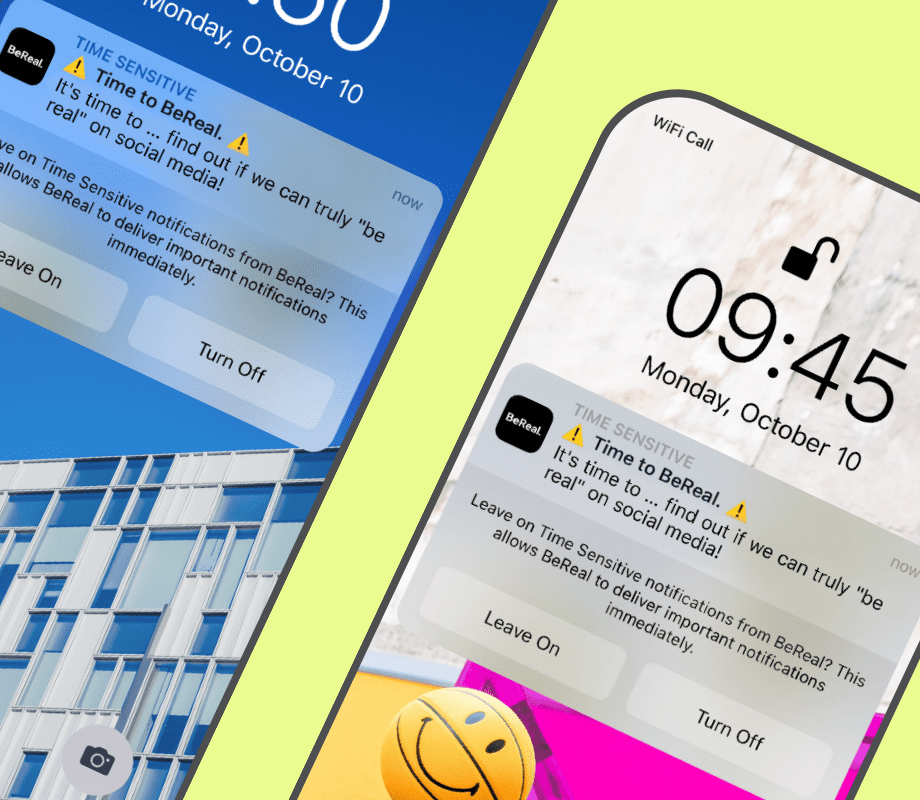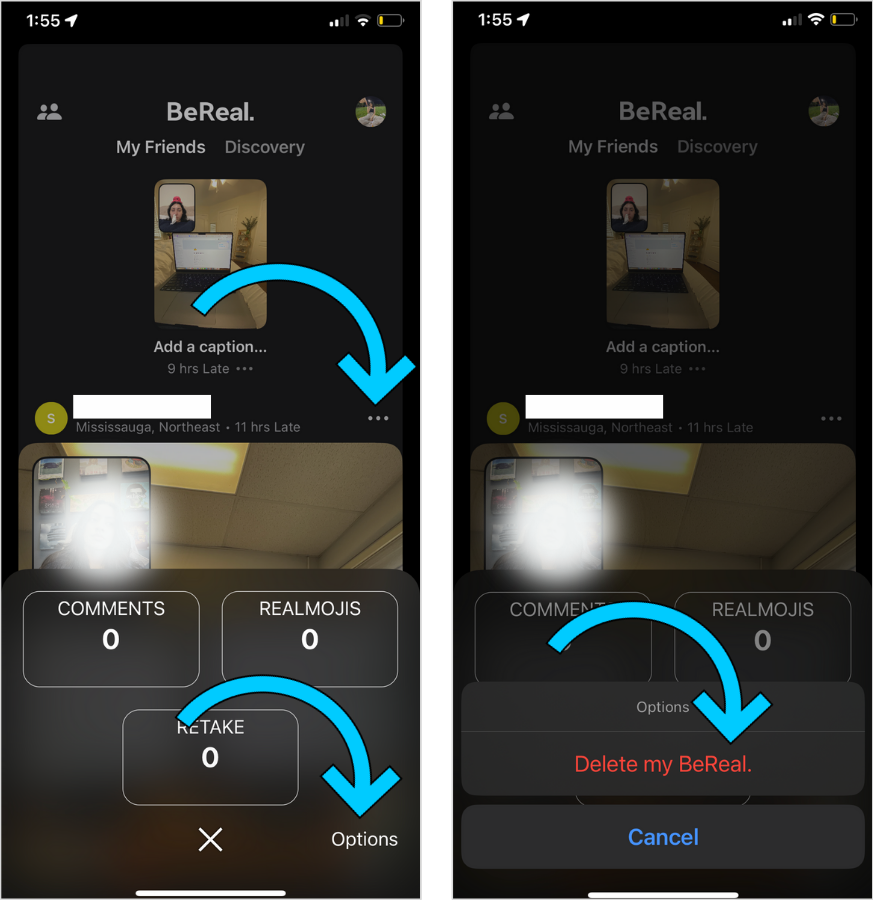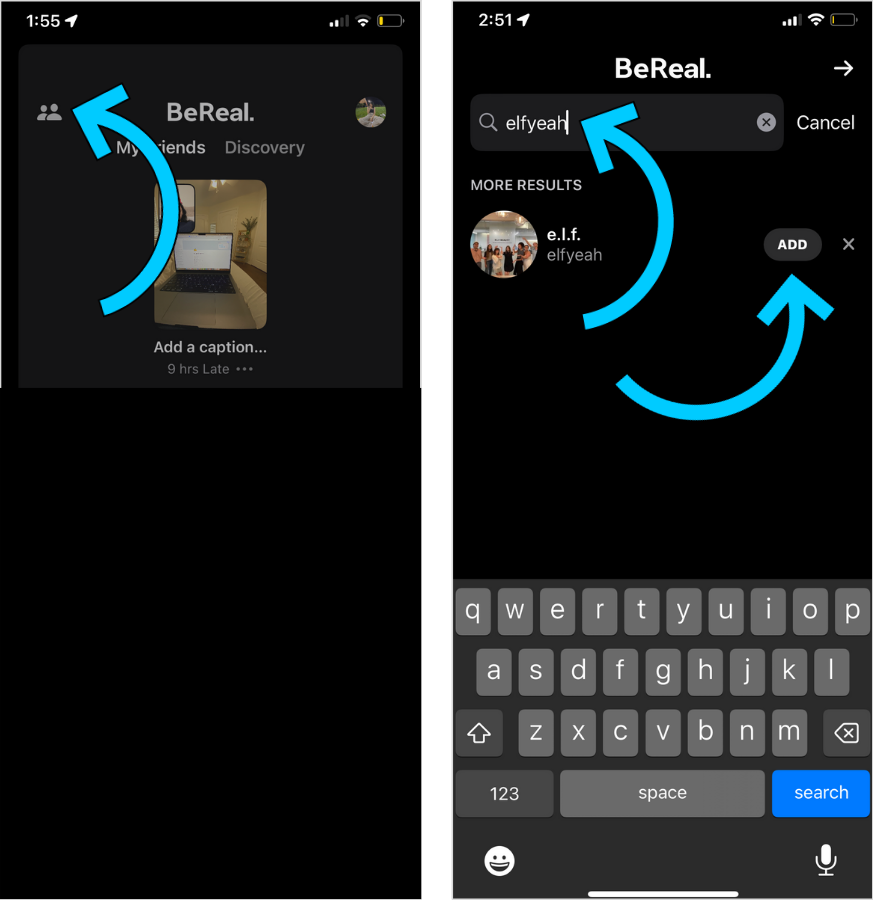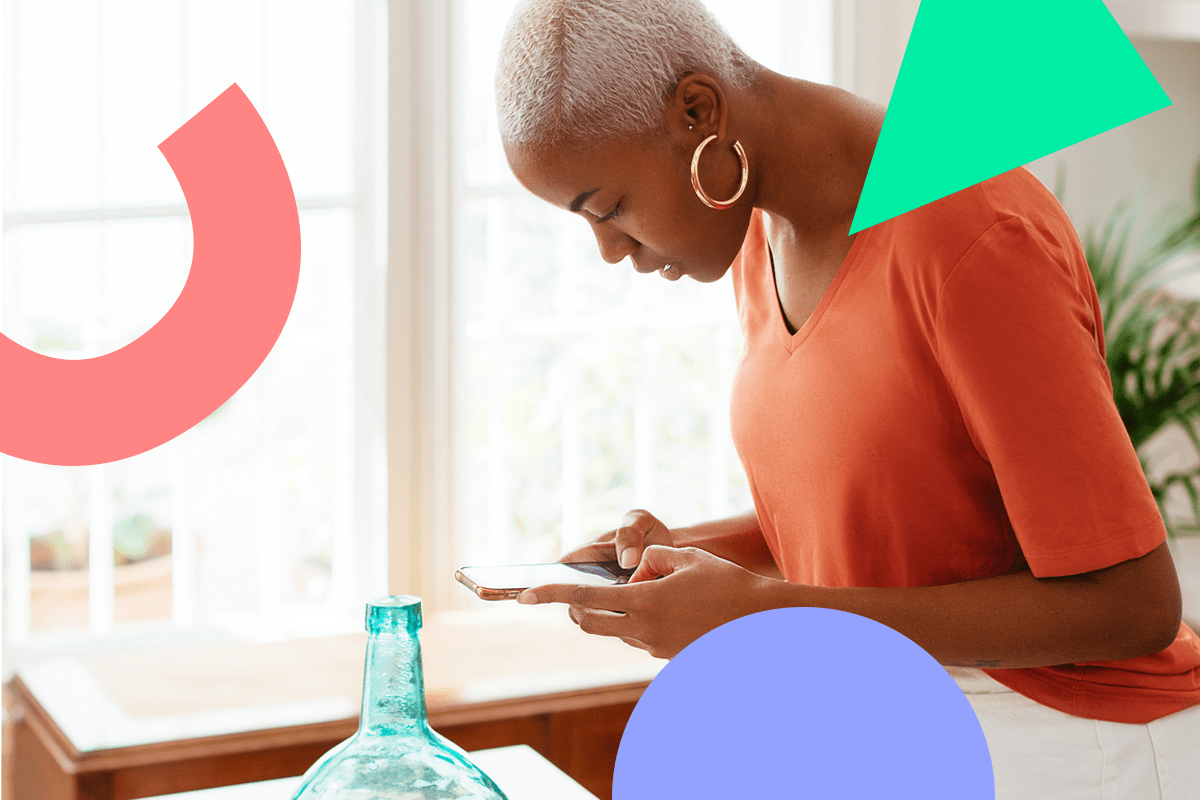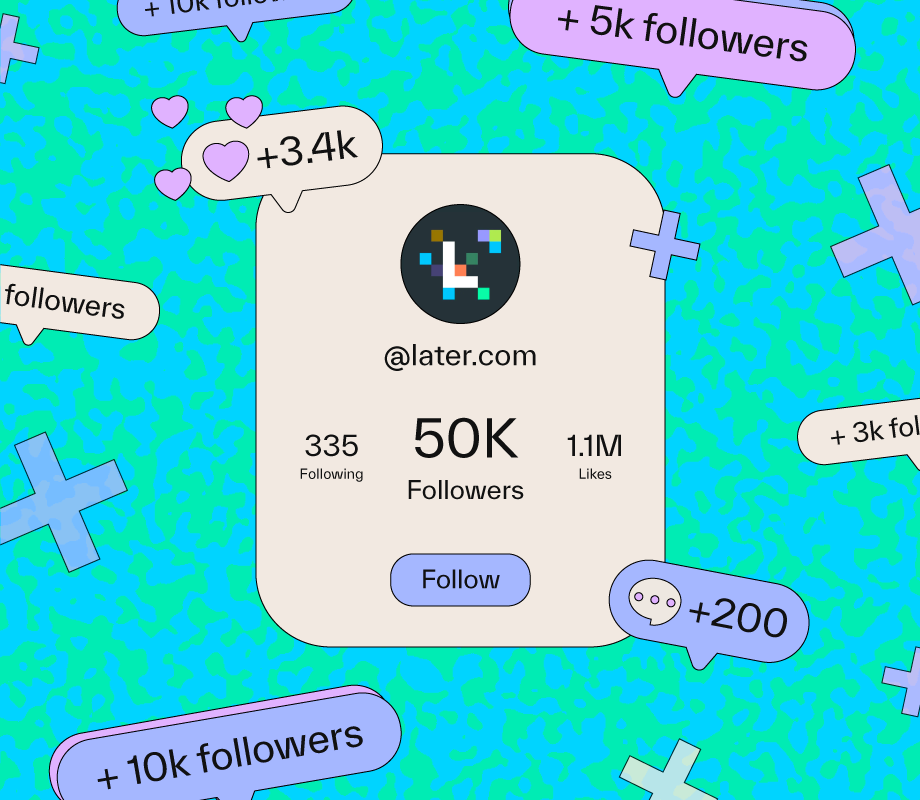What happens when you remove the filters, followers, and curation from social media?
Enter: BeReal.
While perfectly-curated feeds and posts were once the norm, BeReal challenges us to "get candid."
But can we truly stop "performing"?
P.S., it's Alyssa here. I spend too much time scouring the depths of the internet, and I have the BeReals to prove it.
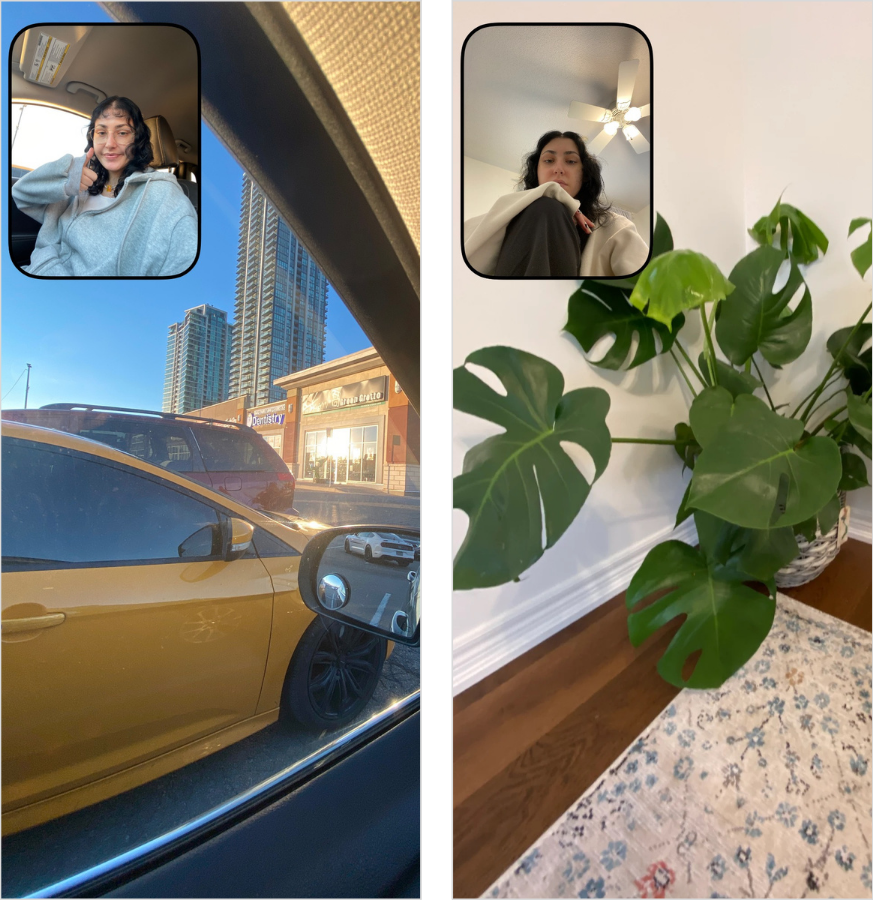
This past month, Later set out to learn more about the app shaking up social media, and find out if we can truly “be real” online.
30 sum notifications and “real” moments later, here’s what we found.
What is BeReal?
Created to capture “real” moments, BeReal challenges us to show our friends who we “really are, for once."
Every day, the photo-sharing app notifies users to share what they're doing in real-time.
And they only have two minutes to do so.

Launched in late 2019, BeReal has since grown its user base by 315% in 2022 alone.
The recent buzz has sparked social media giants to take note and create their own features with a similar spin, like TikTok Now and Instagram Candid Challenges.
It even made its way to an episode of SNL:
⚠️ TIME TO BEREAL. ⚠️ but you’re robbing a bank #SNLPremiere pic.twitter.com/ofvre6mDuf
— Saturday Night Live - SNL (@nbcsnl) October 2, 2022
But with only 9% of active Android users opening the app daily compared to Instagram’s 39% and TikTok’s 29%, we’re curious to see how BeReal will evolve.
P.S. Later is a social media management tool trusted by over 4M businesses, creators, and social media managers. Create an account and start planning and scheduling your social media content, today:
3 Things We Learned Using BeReal for 30 Days
We used BeReal every single day for a month. Here's what we learned:
Let Go of the Need to Be "Perfect" on Social Media
That Said, We're Still Curating Our Lives
Brands Can Tap Into Authenticity, Too
Learning #1: Let Go of the Need to Be "Perfect" on Social Media
We’re accustomed to using social media as a highlight reel and putting our best faces (and moments) forward.
But with BeReal’s spur-of-the-moment notification to share spontaneous (and unedited) photos, that no longer applies.
Cue us shamelessly watching the last two minutes of Fleabag for the fourth time:
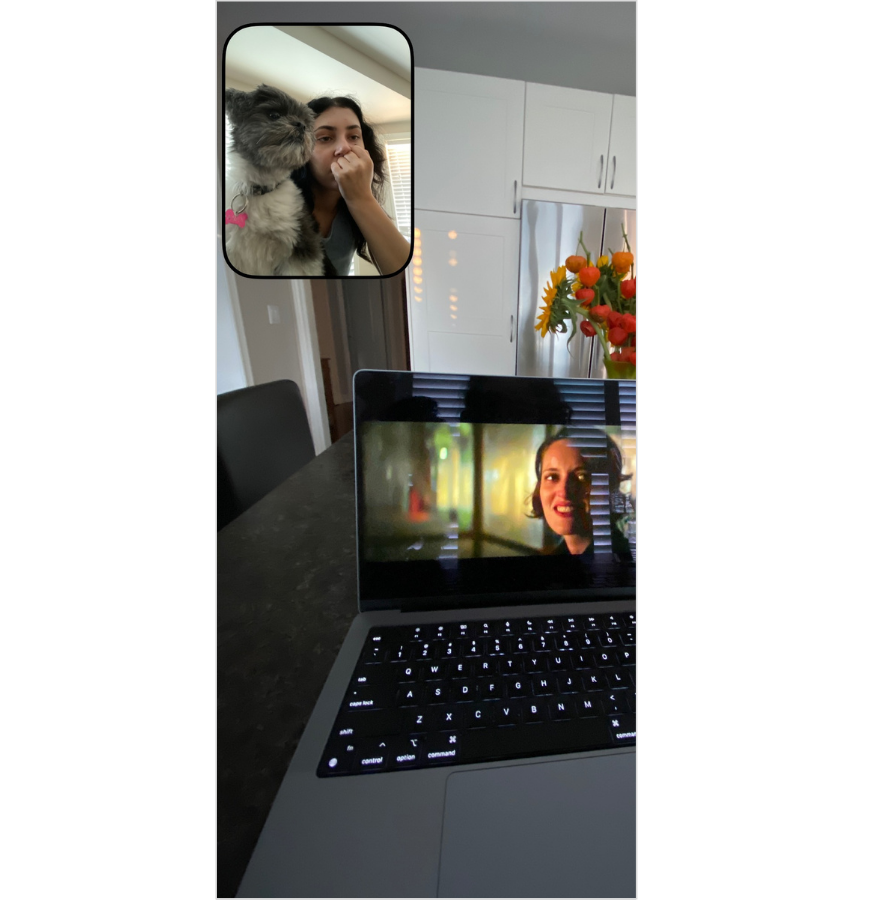
Similar to the growing trend amongst creators to abandon "perfection" on social media (think Instagram photo dumps or unfiltered TikTok videos), BeReal forces us to show a less glamorized version of ourselves.
And with no clear likes or curation, there’s no pressure to garner engagement either.
The entire concept of BeReal reminds us that “perfection” is on its way out and "authenticity" is in (more on that, later).
Learning #2: That Said, We're Still Curating Our Lives
In a nutshell, being authentic on social media requires you to be true to you — even if it's an online version.
But how authentic can we really be when we have control over what we share and how we share it?
“I’m interested in seeing more spontaneous, unfiltered posts but I’m not sure it’s possible to achieve true authenticity on social media," says Hannah McInall, Later’s Content Marketing Specialist.
“There’s always a level of curation when you know other people will see your content.”
Hence our dilemma.
The more we used BeReal, the more we felt the urge to get creative with poses, put effort into our appearance, or move to a different location when the notification went off.
Because who really wants to see another photo of your WFH desk? Boring, capital B.
But it is authentic…right?
And judging by the rise of “mundane” content like Emily Mariko making a salmon rice bowl, or Mia Lind going on a hot girl walk, maybe we’re all looking for something a little bit more boring and relatable — even if it’s slightly curated.
The takeaway? Embrace the mundane and let your IRL moments inspire your content.
Learning #3: Brands Can Tap Into Authenticity, Too
While BeReal doesn’t currently allow formal advertising, some brands have joined the platform to introduce us to the people behind-the-scenes.
For example, here’s an Ulta Beauty employee giving us a glimpse into their day, no filters:

While brands don't have to join BeReal, they can be inspired by its concept.
The truth is, “authentic” content is growing on mainstream social platforms — and brands need to think about how they can fit into the equation.
Because when you strip back the corporate mask and tap into authenticity, you can build an engaged community on any platform:
So, can you truly “be real” on social media? Not technically.
As long as there’s a screen separating you from your audience, you’re always going to perform in some way — but that doesn’t mean you can’t show more of yourself online.
Maybe you don’t need to BeReal — you just need to be intentional about the content you choose to share (and why you’re sharing it).
With Later, you can plan and publish your social media posts in advance for free. Join over 4M businesses, creators, and social media managers now and create an account:
